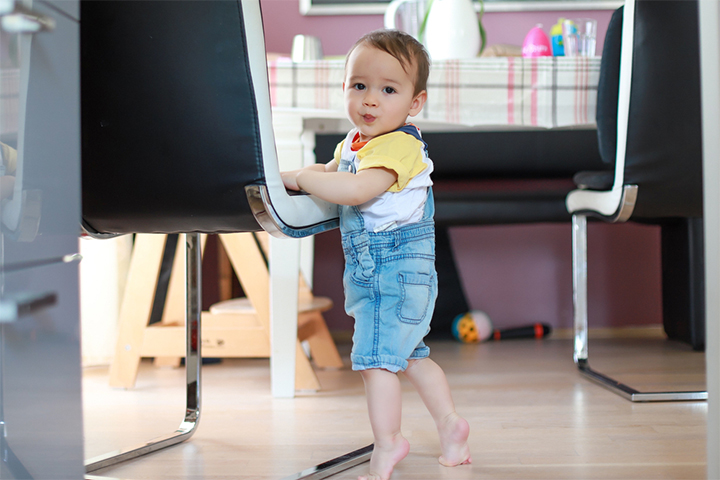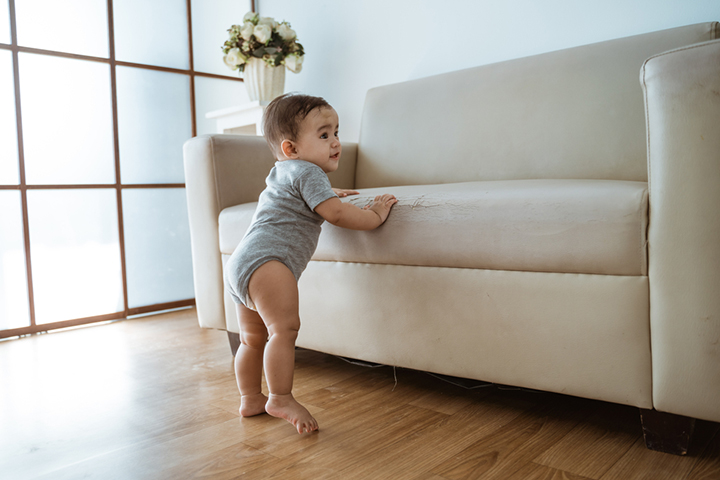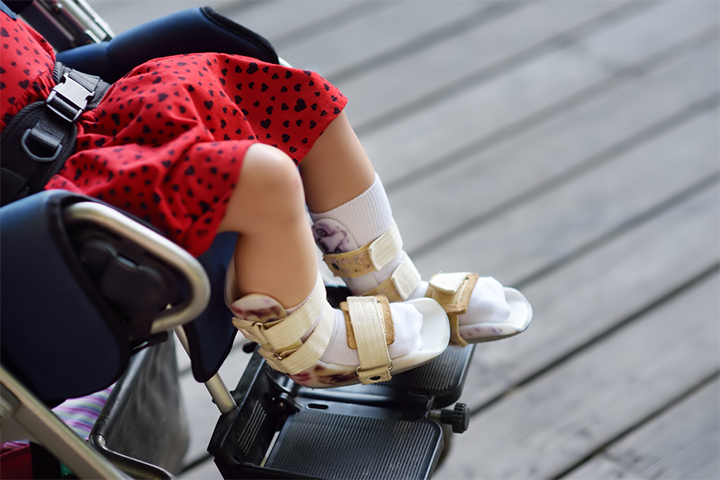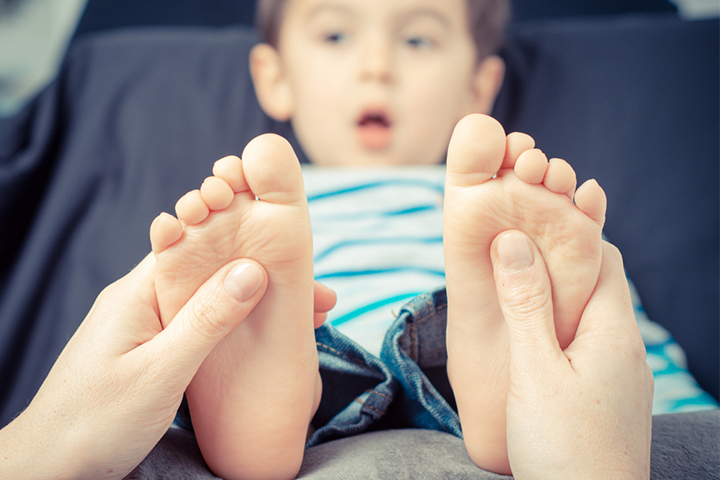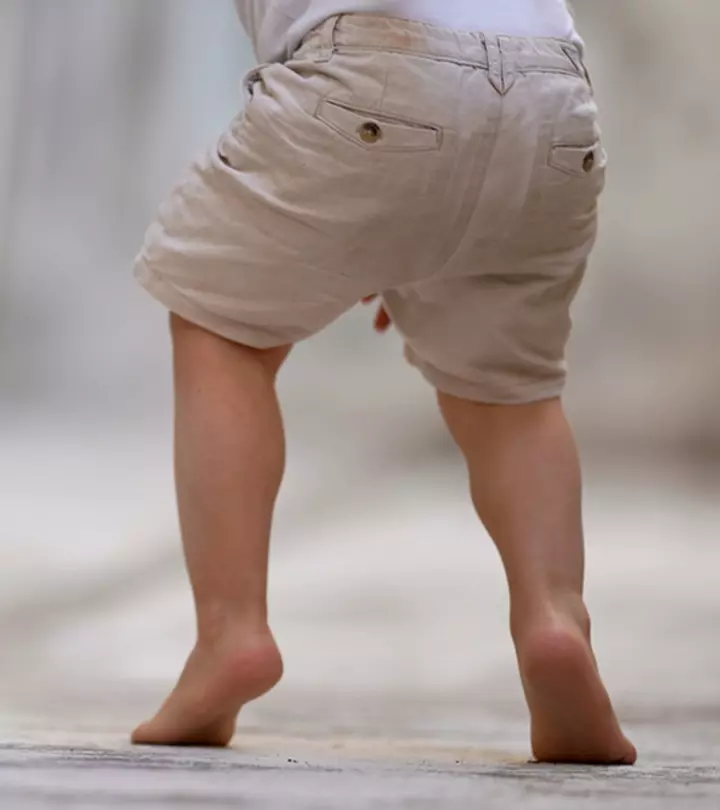
Image: Shutterstock
Kids frequently practice tiptoeing, so should parents be concerned? Does walking on toes indicate an underlying issue in your kids, or is it something they will learn to control? You might worry that if your child’s toe walks, there may be a bigger problem. Although toe walking can be a starting point for some underlying illnesses, kids usually quit practicing it as they age.
Continue reading to learn more about toe walking in kids and when you should consult your doctor.
Toe Walking And Its Causes
Image: Shutterstock
When a toddler walks on their tippy toes with the heels off the floor, they are known as toe walking. This developmental period can last from three months to three years and is typically seen in kids starting to walk. Toe walking can develop for a variety of reasons. Therefore, it’s critical to determine the cause.
Since tiptoeing typically stops around two or three years, it’s usually nothing to worry about in kids. However, some underlying reasons and disorders may be involved if it doesn’t. Following is a discussion of a few of the reasons why kids walk:
1. Autism
Children with autism spectrum disorders and developmental delays may exhibit long-toe walking, speech, and social impairments. (1)
2. Syndrome
Idiopathic toe walking may cause your child’s continued toe walking if there is no underlying disease causing it and the ankle joint moves normally. This suggests that there isn’t a purpose for it and that they might have started toe-walking out of habit.
3. Paralysis
The Achilles tendon in cerebral palsy can sometimes be pulled up, making it difficult for kids to put their feet flat on the floor. (2) This might promote toe walking. They might be encouraged to step on their toes.
4. Cerebral Palsy
Standing and walking difficulties are linked to several different kinds of cerebral palsy. For example, the muscle groups around the feet are known to become highly rigid in those with spastic cerebral palsy, making walking challenging. Sometimes preemies may also experience brain hemorrhages, resulting in cerebral palsy, difficulty walking, and toe walking.
Symptoms Of Toe Walking
Image: Shutterstock
- Calf muscle tightness.
- Falling frequently.
- Foot or leg discomfort.
- Developmental disabilities, particularly regarding balance and jumping abilities.
- Wearing high top shoes, in particular, presents difficulties.
Idiopathic Toe-Walking
Walking on toes in young kids for unknown causes is referred to as idiopathic toe-walking. This may apply to older kids who walk on their toes out of habit, for behavioral reasons, or because of strained tendon muscles from repeated toe walking. Toe walking is a practice that many kids pick up for unclear reasons. The term “idiopathic toe-walking” refers to this disorder.
Treatments For Toe Walking In Kids
Image: Shutterstock
1. Physiotherapy
Stretching exercises and light foot muscle massages may help kids who toe-walk in the initial stages.
2. Orthotics for the ankle, foot, and legs
A special brace called an ankle-foot orthosis is made to hold the ankle in the proper posture. These braces lessen the strain that long-toe walking places on the toe muscles. In addition, an ankle-foot orthosis increases the flexion and extension of the foot and aids in muscle relaxation.
3. Surgery
If various conservative therapies fail to control toe walking, surgery is recommended as the last solution. The Achilles tendon in the ankle region is surgically lengthened to treat toe walking. (3) The tendons’ extension encourages a broader range of motion and enables correct ankle and foot functioning.
Prevention Tips For Toe Walking
Image: Shutterstock
1. Performing Regular Stretches
Muscles are not as flexible in kids. Stretches can assist them in improving their range of motion in their ankles and loosening up tight muscles.
2. Using Calf Weights
These can assist stretch the tendon in your child’s foot and enable them to walk flat-footed. Always utilize the proper weights for the right situation, and consult a therapist before investing.
3. Wearing Correct Shoes
You can avoid toe walking with your kids by making them wear suitable shoes with adequate ankle support. To help them learn to walk by themself, you can urge your kid to wear shoes within the house frequently.
When To Consult A Doctor
Image: Shutterstock
Luckily, there are fewer chances of illnesses that can result from toe walking. It is regarded as a typical newborn development stage of early walking. Most of the time, without any medical assistance, kids begin walking with their feet touching the floor. However, it is advised to seek prompt medical attention if your child has a health illness related to toe walking (above age 2), a walking challenge, or maybe if toe walking returns after some time of regular walking.
Kids usually take to tiptoeing before walking. Most eventually outgrow the habit and switch to a heel-to-toe stance. However, toe walking is occasionally a symptom of a medical problem. Speak with your child’s doctor if you have concerns about their toe walking. They can establish whether your child’s toe walking is a problem and choose the best action.

